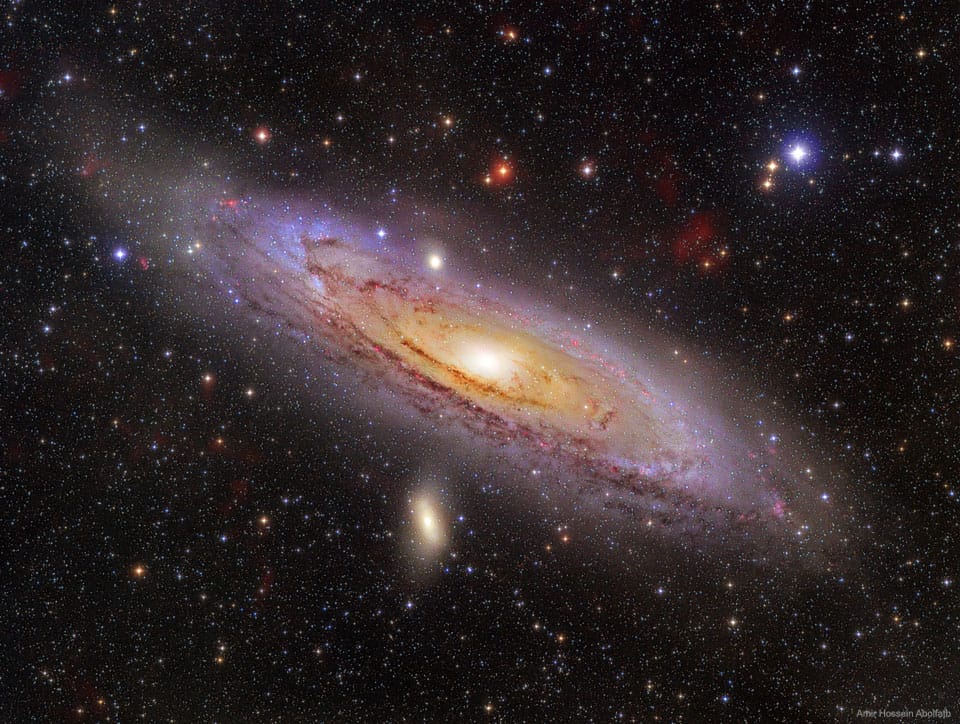Blog
Roy Ayers (born September 10, 1940) is an American funk, soul, and jazz composer, vibraphone player, and music producer. Ayers began his career as a post-bop jazz artist, releasing several albums with Atlantic Records, before his tenure at Polydor Records beginning in the 1970s, during which he helped pioneer jazz-funk. He is a key figure in the acid jazz movement, and has been dubbed “The Godfather of Neo Soul”. He is best known for his compositions “Everybody Loves The Sunshine”, “Searchin” and “Running Away”. and at one time was said to have more sampled hits by rappers than any other artist.
Ayers was born in Los Angeles, and grew up in a musical family, where his father played trombone and his mother played piano.[7][8] At the age of five, he was given his first pair of vibraphone mallets by Lionel Hampton. The area of Los Angeles that Ayers grew up in, South Park (later known as South Central) was the epicenter of the Southern California Black music scene. The schools he attended (Wadsworth Elementary, Nevins Middle School, and Thomas Jefferson High School) were all close to the famed Central Avenue, Los Angeles’ equivalent of Harlem‘s Lenox Avenue and Chicago’s State Street. Roy would likely have been exposed to music as it not only emanated from the many nightclubs and bars in the area, but also poured out of many of the homes where the musicians who kept the scene alive lived in and around Central. During high school, Ayers sang in the church choir and fronted a band named The Latin Lyrics, in which he played steel guitar and piano. His high school, Thomas Jefferson High School, produced some of the most talented new musicians, such as Dexter Gordon.
more...William B. Lawsha, better known as Prince Lasha (pronounced “La-shay“), (September 10, 1929 – December 12, 2008)[1] was an American jazzalto saxophonist, flautist, and clarinetist.
He was born in Fort Worth, Texas, where he came of age studying and performing alongside fellow I.M. Terrell High School students John Carter, Ornette Coleman, King Curtis, Charles Moffett, and Dewey Redman.
Lasha moved to California during the 1950s. In the 1960s, he was active in the burgeoning free jazz movement, of which his Fort Worth cohort Ornette Coleman was a pioneer. Lasha recorded with Eric Dolphy (Iron Man and Conversations, both in 1963) and the Elvin Jones/Jimmy Garrison Sextet featuring McCoy Tyner (Illumination! in 1964).
Lasha moved to Europe and in 1966 was based in Kensington, London, The album Insight (1966) by the Prince Lasha Ensemble was recorded in England and featured local musicians, including Bruce Cale, Dave Willis, Jeff Clyne, Rick Laird, Joe Oliver (drums), David Snell (harp), Mike Carr, Stan Tracey, John Mumford (trombone) and Chris Bateson (trumpet).
Returning to the US in 1967, Lasha worked closely with saxophonist Sonny Simmons, with whom he recorded two albums, The Cry (1962) and Firebirds (1967), for Contemporary Records. The latter album received five stars and an AMG Albumpick at Allmusic.
https://www.youtube.com/watch?v=HDS0lSGt95A
more...https://www.youtube.com/watch?v=Pc8zIp4NgyE
more...The most distant object easily visible to the unaided eye is M31, the great Andromeda Galaxy, over two million light-years away. Without a telescope, even this immense spiral galaxyappears as an unremarkable, faint, nebulous cloud in the constellation Andromeda. But a bright yellow nucleus, dark winding dust lanes, luminous blue spiral arms, and bright red emission nebulas are recorded in this stunning six-hour telescopic digital mosaic of our closest major galactic neighbor. While even casual skygazers are now inspired by the knowledge that there are many distant galaxies like M31, astronomers seriously debated this fundamental concept only 100 years ago. Were these “spiral nebulae” simply outlying gas clouds in our own Milky Way Galaxy or were they “island universes” — distant galaxies of stars comparable to the Milky Way itself? This question was central to the famous Shapley-Curtis debate of 1920, which was later resolved by observations favoring Andromeda being just like our Milky Way Galaxy — a conclusion making the rest of the universe much more vast than many had ever imagined.
more...Otis Ray Redding Jr. (September 9, 1941 – December 10, 1967) was an American singer, songwriter, record producer, arranger, and talent scout. He is considered one of the greatest singers in the history of American popular music and a seminal artist in soul music and rhythm and blues. Redding’s style of singing gained inspiration from the gospel music that preceded the genre. His singing style influenced many other soul artists of the 1960s.
Redding was born in Dawson, Georgia, and at the age of 2, moved to Macon, Georgia. Redding quit school at age 15 to support his family, working with Little Richard‘s backing band, the Upsetters, and by performing in talent shows at the historic Douglass Theatre in Macon. In 1958, he joined Johnny Jenkins‘s band, the Pinetoppers, with whom he toured the Southern states as a singer and driver. An unscheduled appearance on a Stax recording session led to a contract and his first single, “These Arms of Mine“, in 1962.
Stax released Redding’s debut album, Pain in My Heart, two years later. Initially popular mainly with African-Americans, Redding later reached a wider American pop music audience. Along with his group, he first played small shows in the American South. He later performed at the popular Los Angeles night club Whisky a Go Go and toured Europe, performing in London, Paris and other major cities. He also performed at the Monterey Pop Festival in 1967.
Shortly before his death in a plane crash, Redding wrote and recorded his iconic “(Sittin’ On) The Dock of the Bay” with Steve Cropper. The song became the first posthumous number-one record on both the Billboard Hot 100 and R&B charts. The album The Dock of the Bay was the first posthumous album to reach number one on the UK Albums Chart. Redding’s premature death devastated Stax. Already on the verge of bankruptcy, the label soon discovered that the Atco division of Atlantic Records owned the rights to his entire song catalog.
Redding received many posthumous accolades, including the Grammy Lifetime Achievement Award and induction into the Rock and Roll Hall of Fameand the Songwriters Hall of Fame. In addition to “(Sittin’ On) The Dock of the Bay,” “Respect” and “Try a Little Tenderness” are among his best-known songs.
Redding was born in Dawson, Georgia, U.S., the fourth of six children, and the first son, of Otis Redding, Sr., and Fannie Roseman. Redding senior was a sharecropper and then worked at Robins Air Force Base, near Macon, and occasionally preached in local churches. When Otis was three the family moved to Tindall Heights, a predominantly African-American public housing project in Macon. At an early age, Redding sang in the Vineville Baptist Church choir and learned guitar and piano. From age 10, he took drum and singing lessons. At Ballard-Hudson High School, he sang in the school band. Every Sunday he earned $6 by performing gospel songs for Macon radio station WIBB.
more...- Elvin Ray Jones (September 9, 1927 – May 18, 2004) was an American jazz drummer of the post-bop era. He showed an interest in drums at a young age, watching the circus bands march by his family’s home in Pontiac, Michigan. He served in the United States Army from 1946 to 1949 and subsequently played in a Detroit house band led by Billy Mitchell. He moved to New York City in 1955 and worked as a sideman for Charles Mingus, Teddy Charles, Bud Powell and Miles Davis.
From 1960 to 1966, he was a member of the John Coltrane quartet (along with Jimmy Garrison on bass and McCoy Tyner on piano), a celebrated recording phase, appearing on such albums as A Love Supreme and Live at Birdland. Following his work with Coltrane, Jones led several small groups, some under the name The Elvin Jones Jazz Machine. His brothers Hank Jones and Thad Jones were also jazz musicians with whom he recorded. He was inducted into the Modern Drummer Hall of Fame in 1995. Elvin Jones was born in Pontiac, Michigan to parents Henry and Olivia Jones, who had moved to Michigan from Vicksburg, Mississippi. His brothers, Hank Jones and Thad Jones, both became important jazz musicians. By age two, he said he knew he held a fascination for drums. He would watch the circus marching band parades go by his home as a boy, particularly fascinated by the drummers.
https://www.youtube.com/watch?v=IsBbM5PIAHk
more...https://www.youtube.com/watch?v=Nn_ZuSgp5bE
more...The center of the galaxy doesn’t look like much, even if you’re lucky enough to live in a place where the night sky is sufficiently dark to see the bands of the Milky Way. In visible light, the stars between here and there blur together into a single brilliant source, like a bright beam hiding the lighthouse behind it. But in other types of radiation—radio waves, infrared, X-rays—astronomers have detected the presence of an object with the mass of four million suns packed into a region smaller than our solar system: a supermassive black hole. Astronomers call it Sagittarius A*, or Sgr A* (pronounced “sadge A star”) for short, because it’s located (from our point of view) in the Sagittarius constellation. Discovering the Milky Way’s black hole has helped cement the idea that the center of nearly every large galaxy harbors a supermassive black hole. But despite mounting evidence for black holes, we still haven’t seen one directly. That may change very soon. Astronomers are about to begin an observing project that may result in what was once thought impossible: a picture of the supermassive black hole at the center of our galaxy.
more...Ronald Charles McKernan (September 8, 1945 – March 8, 1973), known as Pigpen, was an American singer and musician. He was a founding member of the San Francisco band the Grateful Dead and played in the group from 1965 to 1972.
McKernan grew up heavily influenced by African-American music, particularly the blues, and enjoyed listening to his father’s collection of records and taught himself how to play harmonica and piano. He began socializing around the San Francisco Bay Area, becoming friends with Jerry Garcia. After the pair had played in various folk and jug bands, McKernan suggested they form an electric group, which became the Grateful Dead. He was the band’s original frontman as well as playing harmonica and electric organ, but Garcia and bassist Phil Lesh‘s influences on the band became increasingly stronger as they embraced psychedelic rock. McKernan struggled to keep up with the changing music, causing the group to hire keyboardist Tom Constanten, with McKernan’s contributions essentially limited to vocals, harmonica and percussion from November 1968 to January 1970. He continued to be a frontman in concert for some numbers, including covers of Bobby Bland‘s “Turn On Your Love Light” and the Rascals‘ “Good Lovin’“.
Unlike the other members of the Grateful Dead, McKernan avoided psychedelic drugs, preferring to drink alcohol (namely whiskey and flavored fortified wine). By 1971, his health had been affected by alcoholism and liver damage and doctors advised him to stop touring. Following a hiatus, he resumed touring with the group in December 1971 but was forced to retire from touring altogether in June 1972. McKernan was found dead of a gastrointestinal hemorrhage on March 8, 1973, aged 27, and is buried at Alta Mesa Memorial Park in Palo Alto.
more...James Earl Clay (b. Sept. 8, 1935, Dallas, Texas – d. there, Jan. 1, 1994) was an American hard bop jazz tenor saxophonist and flutist. While in school Clay played alto saxophone, became a professional musician, and played with local bands in Dallas, including with Booker Ervin. Later, he went to California, there he played in 1957 in Red Mitchell‘s quartet and on recordings with Lawrence Marable. at the end of 1957 he returned to his hometown of Dallas, and served in the Army in 1959.
After a few decades of obscurity, Clay enjoyed a modestly successful career revival in the late 1980s and early 1990s.
more...Guitar Shorty (born David William Kearney, September 8, 1939 in Houston, Texas, United States) is an American blues guitarist, singer and songwriter. He is well known for his explosive guitar style and wild stage antics. Billboard magazine said, “his galvanizing guitar work defines modern, top-of-the-line blues-rock. His vocals remain as forceful as ever. Righteous shuffles…blistering, sinuous guitar solos.”
Shorty was born in Houston but grew up mainly in Kissimmee, Florida, where he began playing the guitar at an early age and began leading a band not long after. During his time in Tampa Bay, Florida, at age 16 he received his nickname, Guitar Shorty, when it mysteriously showed up on the marquee of the club he was playing as ‘The Walter Johnson Band featuring Guitar Shorty.’He steadily began to garner accolades from his peers and, soon after, he joined the Ray CharlesBand for a year. He recorded his first single in 1957, “You Don’t Treat Me Right”, for the Cobra label under the direction of Willie Dixon after Dixon saw him playing with the Walter Johnson Orchestra. Eventually, he joined Guitar Slim‘s band and moved to New Orleans, Louisiana. Slim inspired Shorty to incorporate more showmanship into his live performance style. Before long, Shorty was doing somersaults and flips on stage.
more...Wilbur Bernard Ware (September 8, 1923 – September 9, 1979) was an American jazz double bassist He was a staff bassist at Riverside in the 1950s, recording with J.R. Monterose, Toots Thielemans, Tina Brooks, Zoot Sims, and Grant Green.
Ware taught himself to play banjo and bass. In the 1940s, he worked with Stuff Smith, Sonny Stitt, and Roy Eldridge. He recorded with Sun Ra in the early 1950s. Later in the 1950s, settling in New York City, Ware played with Eddie Vinson, Art Blakey, and Buddy DeFranco. His only album recorded as a leader during his lifetime was The Chicago Sound, from 1957 when he worked for Riverside. He made jazz instructional albums for Music Minus One. In 1958, Ware was one of 57 jazz musicians to appear in the photograph A Great Day in Harlem.
Ware was a member of the Thelonious Monk quartet from 1957 to 1958. He also performed with the Sonny Rollins Trio live at the Village Vanguard.
Narcotics addiction resulted in his return to Chicago in 1963 and a period of incarceration. He was inactive musically for about six years. In 1969, Ware played with Clifford Jordan, Elvin Jonesand Sonny Rollins. He died from emphysema in Philadelphia in 1979.
https://www.youtube.com/watch?v=XligryRDuPY
more...Tajikistan
more...Performing today Saturday Sept 7th 3-445pm with Reggae singer, Yard Style, crucial and direct with Belize born KingRasJohn at Ethnic Fest 2019 on Leech Lake Reservation.
more...NASA’s Wide-field Infrared Survey Explorer, or WISE, captured this image of a star-forming cloud of dust and gas located in the constellation of Monoceros. The nebula, commonly referred to as Sh2-284, is relatively isolated at the very end of an outer spiral arm of our Milky Way galaxy. The most interesting features in Sh2-284 are what astronomers call “elephant trunks.” Elephant trunks are monstrous pillars of dense gas and dust. In this WISE image, the trunks are seen as small columns of gas stretching towards the center of the void in Sh2-284, like little green fingers with yellow fingernails. The most notable one can be seen on the right side of the void at about the 3 o’clock position. It appears as a closed hand with a finger pointing towards the center of the void. That elephant trunk is about 7 light-years long. Deep inside Sh2-284 resides an open star cluster, called Dolidze 25, which is emitting vast amounts of radiation in all directions, along with stellar winds. These stellar winds and radiation are clearing out a cavern inside the surrounding gas and dust, creating the void seen in the center. The Sh2-284 nebula is classified as an HII region. HII regions go hand in hand with star formation. They’re hot, young, bright stars, with ages ranging from 1.5 to 13 million years. In comparison, the sun is about 4.6 billion years old. The colors used in this image represent specific wavelengths of infrared light. Blue and cyan (blue-green) represent light emitted at wavelengths of 3.4 and 4.6 microns, which is predominantly from stars. Green and red represent light from 12 and 22 microns, respectively, which is mostly emitted by dust.
more...Christine Ellen Hynde (born September 7, 1951) is an American singer-songwriter and musician. She is a founding member and the guitarist, lead vocalist, and primary songwriter of the rock band The Pretenders, as well as its only constant member.
Hynde formed The Pretenders in 1978 with Pete Farndon, James Honeyman-Scott and Martin Chambers. She has also released a number of songs with other musicians including Frank Sinatra, Cher and UB40, and she released the solo album Stockholm in 2014. Hynde was inducted into the Rock and Roll Hall of Fame in 2005 as a member of The Pretenders.
Hynde was born in Akron, Ohio, the daughter of a part-time secretary and a Yellow Pages manager. She graduated from Firestone High School in Akron, but stated that “I was never too interested in high school. I mean, I never went to a dance, I never went out on a date, I never went steady. It became pretty awful for me. Except, of course, I could go see bands, and that was the kick. I used to go to Cleveland just to see any band. So I was in love a lot of the time, but mostly with guys in bands that I had never met. For me, knowing that Brian Jones was out there, and later that Iggy Pop was out there, made it kind of hard for me to get too interested in the guys that were around me. I had, uh, bigger things in mind.
more...More Posts
- Cosmos Orion Nebula
- Herbie Mann
- Bennie Green
- Alton Punell
- SAVE UKRAINE Olga Avigail
- Daily Roots The Revolutionaries
- Cosmos M81
- Herb Pomeroy
- Richard Davis
- Annapurna Devi
- Flamenco Fridays The Mediterranean – Andalusian Orchestra
- Daily Roots Kenyatta Hill
- Voices of Seharad Maundy Thursday Performance 4-14-22
- RHYTHM ROOTS WORKSHOP 4-14-22
- Cosmos M96
- Shorty Rogers
- Gene Ammons
- Ali Akbar Khan
- FREE UKRAINE Neringa Rekasiute
- Daily Roots Anthony Que



